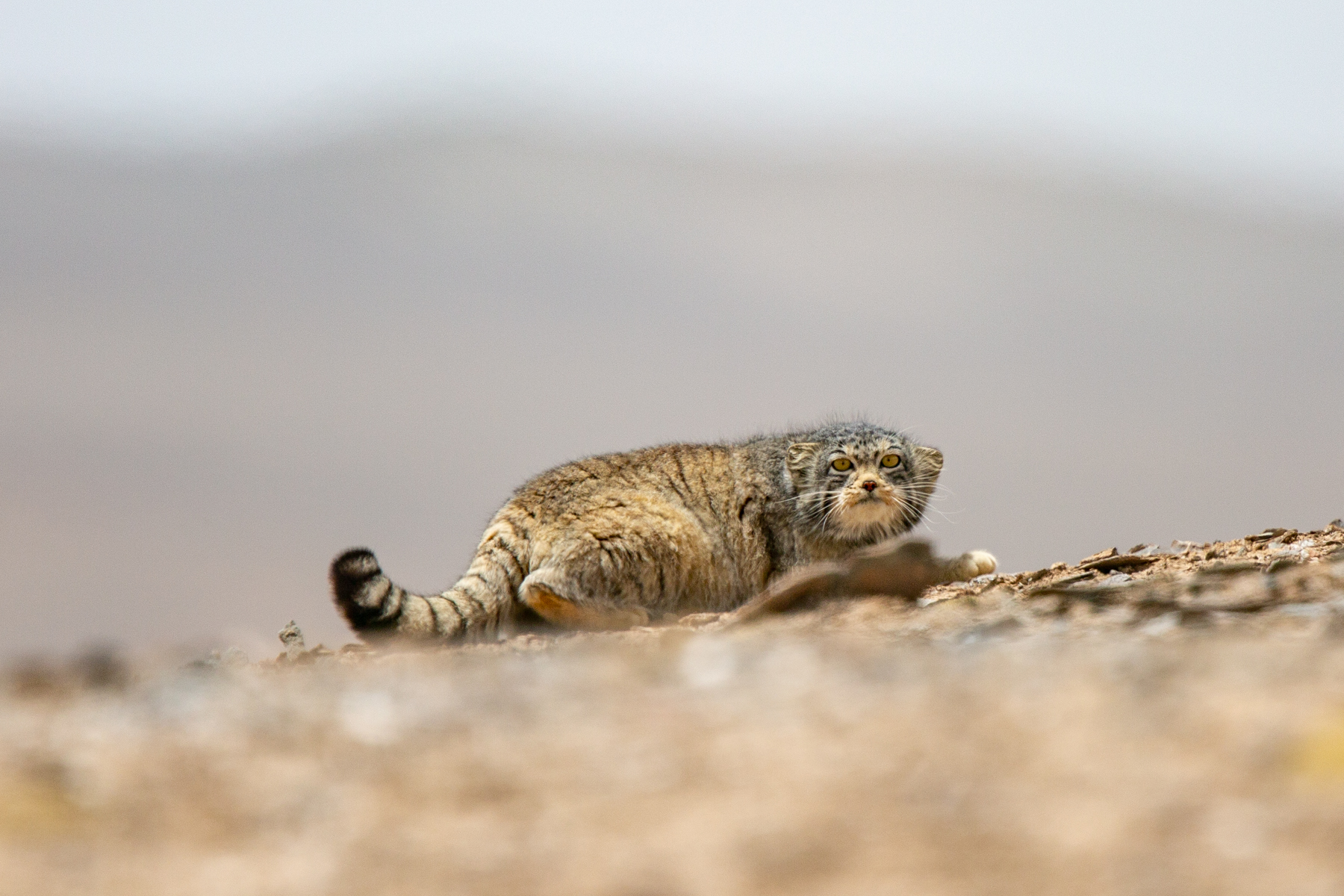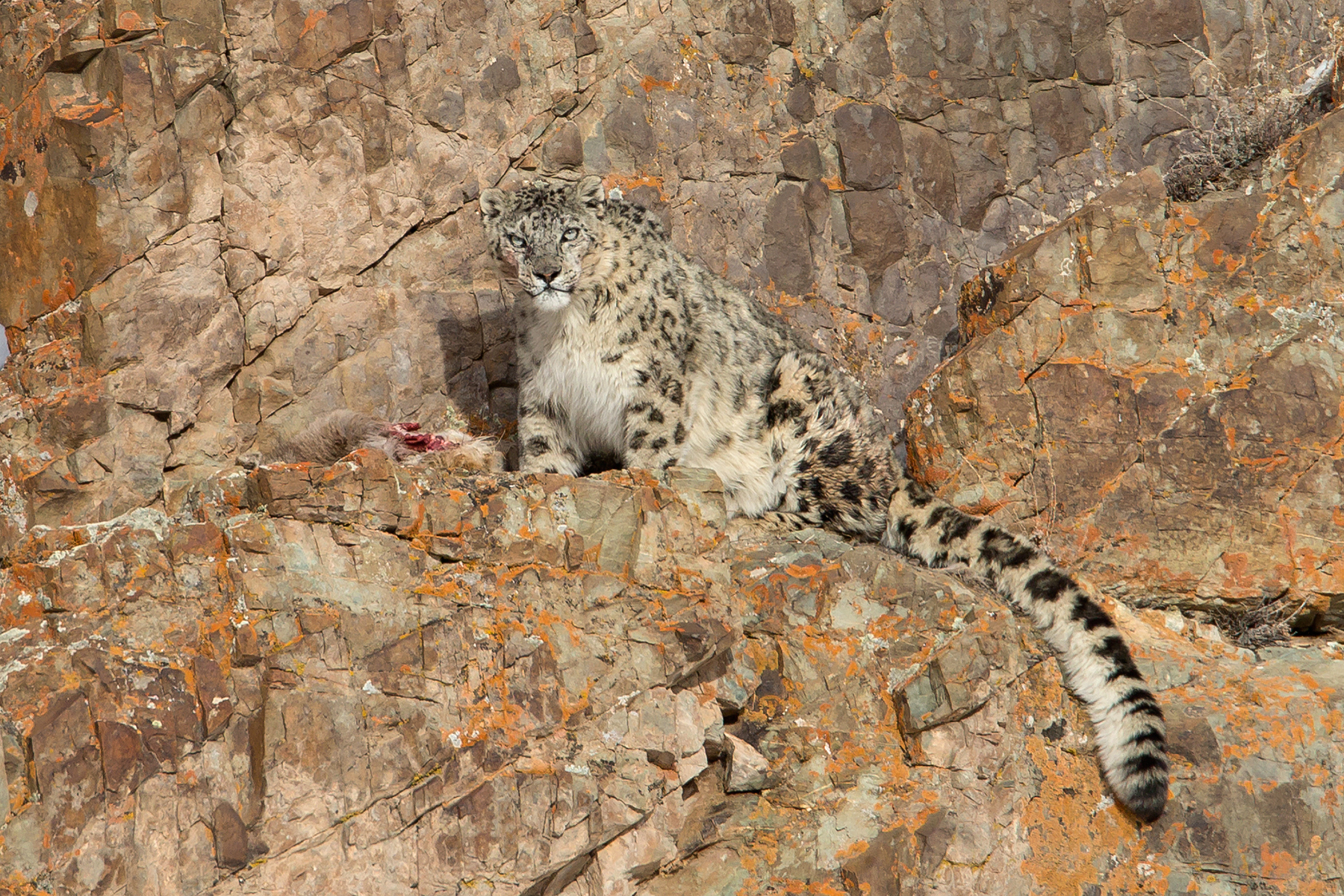|
Friday 20th September – Thursday 3rd October 2024
Leaders: Mark Beaman and local mammal guides
|
14 Days |
Group Size Limit 7 |
| Wild Bactrian Camel Extension Thursday 12th September – Friday 20th September 2024 |
9 Days |
Group Size Limit 7 |
|
Friday 25th September – Thursday 8th October 2026
Leaders: Birdquest leader to be announced and local mammal guides
|
14 Days |
Group Size Limit 7 |
| Wild Bactrian Camel Extension Thursday 17th September – Friday 25th September 2026 |
9 Days |
Group Size Limit 7 |
SNOW LEOPARDS & WILDLIFE OF MONGOLIA: OVERVIEW
Birdquest’s Snow Leopards & Wildlife of Mongolia tour is an adventurous journey across this wild, empty ‘Land without Fences’ in search of such extraordinary mammals as the legendary Snow Leopard, the inscrutable Pallas’s Cat, Marbled Polecat, the last Wild Bactrian Camels, Przewalski’s Horse (the last surviving Wild Horse on earth), Mongolian Kulan (or Mongolian Wild Ass), the strange Saiga Antelope, Goitred and Mongolian Gazelles, Siberian Ibex and the huge-horned Argali (the largest wild sheep on the planet). There will be many great birds to see as well, including the near-endemic Altai Snowcock and Kozlov’s (or Mongolian) Accentor, as well as Demoiselle Crane, Relict Gull, Pallas’s Sandgrouse, Mongolian Lark, Güldenstädt’s Redstart, Henderson’s Ground Jay, Saxaul Sparrow and Pallas’s Reed Bunting.
On our crowded planet, imagine an almost empty land where a primitive, nomadic lifestyle is still the norm, a land of awesome landscapes and fantastic mammals and birdlife. That is Mongolia, even today!
The very name Mongolia conjures up images of endless grasslands, the wastes of the Gobi Desert, yurts and wild horsemen. This is the land from whence came the hordes of Genghis Khan and his successors, sweeping down like a breaking wave on the civilizations of China, India, Central Asia, the Middle East and Eastern Europe – the first real ‘blitzkrieg’ in the history of the world. Yet after this shattering impact on history, the Mongols faded into obscurity and today Mongolia is an unknown land, far away in the heart of Asia, about which one hears little.
For anyone interested in the birds of Asia, or in travel for its own sake, Mongolia has a great deal to offer. With its tiny population of only three million scattered across a huge area, it is one of the least densely settled countries on earth – a true wilderness where most of the land is still the domain of wild creatures rather than man. Mongolia is the crossroads of East Asia. In the north is the southern edge of the great Siberian boreal forest (or taiga), in the centre the seemingly endless steppe and in the south the sands of the Gobi Desert. Adding further diversity to this mixture are the Altai, Gobi Altai, Khangay and Khentiy mountains and a multiplicity of lakes and marshes.
The wide range of habitats is reflected in an exciting fauna that encompasses both Siberian and Central Asian forms, including a number that are unique to Mongolia and its immediate surroundings.
The main tour first focuses on that king of Mongolian mammals, the magnificent but elusive Snow Leopard. From the capital, Ulaanbaatar, we fly far to the west to the remote town of Khovd and then head off into the wide blue yonder as we make our way into the even more remote Jargalant Mountains, part of the immense Altai range.
Here we will spend a week looking for the ‘Grey Ghost of the Mountains’ and with the help of our expert guides we have an extremely high chance of success and indeed we may enjoy multiple sightings. Happy aspects of the Jargalant are that one can often drive close to Snow Leopard observation points and even when a longer walk is required it is often fairly flat and at much lower altitude than hikes in Ladakh. In addition, early autumn temperatures in this region are quite mild by Snow Leopard-watching standards.
As well as the monarch itself, we will come across its main prey, Siberian Ibex, Argali and Tarbagan (or Siberian) Marmots, while at lower altitudes there are Goitred Gazelles and in particular the bizarre, bulbous-nosed Saiga Antelope. Some great birds include the near-endemic Altai Snowcock, Güldenstädt’s Redstart and Henderson’s Ground Jay. A visit to nearby Khar Us lake should produce Pallas’s Sandgrouse, Pallas’s Reed Bunting and numerous waterbirds.
During the second part of the main tour we head off into the wilds again, firstly to Hustai National Park, home to a healthy population of Przewalski’s Horse (the last surviving true Wild Horses on earth) and steppe-inhabiting Red Deer.
After that, we travel to eastern Mongolia to a large area of steppe country interspersed with rocky areas that holds a high density of the superb Pallas’s Cat. As well as these wonderful, yellow-eyed ‘scowling cats’, we should also see Corsac Fox, ground squirrels, Upland Buzzard, Mongolian Lark, Daurian Partridge, Azure Tit, Long-tailed Rosefinch and other birds and mammals of interest.
By the time our Mongolia wildlife tour ends at Ulaanbaatar, we will have a true exploration of one of the ‘wildest’ countries left on the face of our ever more developed planet.
Birdquest has operated Mongolia tours since 1989.
Wild Bactrian Camel Extension Option: Great Gobi A Strictly Protected Area protects a huge area of desert terrain to the south of the Altai Mountains and north of Mongolia’s border with China. Here are stony and sandy plains, areas of sand dunes and sparse saxaul ‘woodlands. Great Gobi A (as opposed to the much smaller B section of the reserve further west) protects an area of 46,369 square kilometres (or 17,903 square miles), making it one of the largest reserves on earth!
The park is most famous as one of the last haunts of Wild Bactrian Camels. Apart from Great Gobi, this Critically Endangered species, which is now reduced to only around 950 individuals or less, is restricted to a few reserves in northwestern China. Interestingly the Wild Bactrian Camel Camelus ferus is now known to be a different species from the Domesticated Bactrian Camel Camelus bactrianus, the two having diverged from a common ancestor over 750,000 years ago! Wild Bactrians are smaller and thinner, with flatter heads (indeed the Mongolian name havtagai means ‘flat head’) and have smaller more conical humps. Amazingly, Wild Bactrians can survive on very saline water (even more saline than seawater!) that no other mammal can tolerate, not even Domesticated Bactrians! We propose the name Gobi Camel for this species, to indicate its separate nature from the domesticated Bactrian Camel.
Although our prime target at Great Gobi is of course the Wild Bactrian Camel, we can also expect to encounter the Mongolian Kulan, or Mongolian Wild Ass, the nominate form of the Asiatic Wild Ass, which is still quite common in the area. Grey Wolves sometimes predate both species, but more usually Goitred Gazelles. They are scarce and elusive and we would be lucky to see one during our visit. Other likely mammals include the appropriately-named Great Gerbil, a diurnal, colonial species. Spotlighting may turn up the beautiful Marbled Polecat, Wild Cat, Long-eared Hedgehog and a series of jerboas, including Gobi Jerboa, the extraordinary Long-eared Jerboa and Five-toed Pygmy Jerboa.
Pallas’s Sandgrouse is positively numerous in the area and we should also encounter the handsome Saxaul Sparrow. At any wetland we pass, there is a chance for Relict Gull at this time of year and we could well encounter migrant shorebirds and many other waterbirds. An important target en route will be the near-endemic Kozlov’s (or Mongolian) Accentor, a species that may only be a winter straggler in adjacent China and so be almost entirely restricted to Mongolia.
Please inform us at the time of booking if you are interested in this optional extension. The cost will depend on the duration (at least a week) and the number of participants.
Accommodation & Road Transport: The ger camps used in the Jargalant Mountains and in the Pallas’s Cat area consist of traditional wood and felt gers (yurts) as used by Mongolian nomads for thousands of years. Each ger has two beds complete with pillow, sheets and duvet. In cold weather, they are heated with a small wood or coal burning stove. There is a separate dining ger with table and chairs. Washing facilities are very simple and toilet facilities are pit toilets. At Hustai the ‘tourist ger camp’ is fixed and more comfortable with larger gers, including pretty furniture, while there is a large dining area and proper toilet and shower blocks. For the camping nights during the Wild Bactrian Camel extension, each participant will have their own tent. (Although the tents are supposedly for two persons, we do not consider they are comfortable for two normal-sized people plus luggage. Couples may of course opt to put luggage in one tent and sleep in the other.) The only camp assistance group members will be asked to give is erecting and dismantling one’s personal tent (an easy and rapid task) on those occasions when the camp crew have limited time. In addition to the individual sleeping tents, there is a large dining tent with tables and chairs, a toilet tent and a shower tent. Roads are generally poor (tarred roads are limited in Mongolia). Our transport consists of sturdy 4×4 vehicles.
Walking: The walking effort during our Mongolia wildlife tour is mostly easy, sometimes moderate.
Climate: Predominantly dry and sunny, but some overcast weather and rain or even snow are likely and wind is a regular feature. Temperatures are generally cool in the daytime (sometimes warm, especially at lower altitudes), but it can be cold at night at higher altitudes.
Mammal & Bird Photography: Opportunities during our Mongolia wildlife tour are good overall but close photographs of Snow Leopards are unlikely.



























































